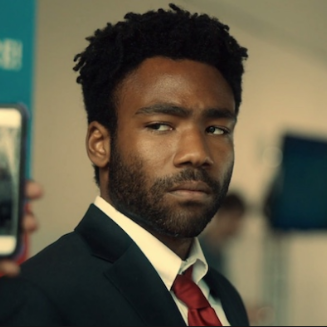Apple Vision Pro launched at WWDC over a week ago and they showed a lot of clips of normal people wearing it doing (relatively) normal things, like cooking, watching movies, even working at the office.
One clip that really intrigued me was the one where a father was recording his kids in 3D through his Vision Pro. To me, this seemed off at first since to other people, it may not look like you’re present in the moment. But after thinking about it for a while, isn’t it the same as just wearing sunglasses, if not better? Sunglasses block your eyes, but Vision Pro would show your eyes to the outside world.
So I guess the question is, will Apple Vision Pro and subsequent products become widely socially acceptable one day?

I can’t imagine it’ll be all that widespread at $3500 dollars.

I can’t imagine the Vision Pro will stay $3500. I fully expect them to release Apple Vision (non pro) for a significantly cheaper price down the line. That product will most likely see more adoption.

100%. The name alone begs for a Vision Air being dropped in the next couple years, hopefully coming with a hefty price drop.
@EonNShadow @TheRtRevKaiser I agree, but I think that the #VisionAir will still be expensive. If it’s $1.5k we should be happy, anything cheaper and it’ll probably be crap tbh

Sure its not already crap? I mean look who makes it. Would i have to jailbreak my headset to watch porn?
Rumours are that Apple will sell an “SE” version that will be much cheaper.

AR/VR intended for use in public spaces will never take off for as long as the user has to strap an expensive and bulky headset to their face. Things will get interesting once we work out how to get that into the form factor of a pair of regular glasses and bring the price down to under half what Apple is asking now.

Not sure. Their only shown use case in a public space was filming a video with their spatial audio and depth aware camera. Wearing a headset for that is IMO not weirder than holding a camcorder, which also was a thing for some time.

I suppose time will tell, it was weird to take photos on a smartphone once upon a time. It’s just been a big stumbling block that no one has really been able to surmount so far and I don’t think Apple is going to do it with their ski goggles. I suppose what Apple has going for them this time around that Google Glass (for example, I know it’s not really the same thing) didn’t is that we’re all a lot more used to cameras being pointed everywhere than we were in 2012.

it was weird to take photos on a smartphone once upon a time.
Really?! I don’t recall that. If you wanted good photos, you had a (D)SLR and a couple of lenses. It was perfectly socially acceptable to do that; it just took considerable dedication thanks to the bulkiness of the equipment.
If you wanted basic photos and mobility was more important, you used a point-and-shoot. Everybody owned at least one, and many people carried them around with them at (most) times. And if you were an early-adopter but didn’t mind the lower quality, you used your phone to take photos.
Nobody really cared much when you did that, as the form factor of the phone looked very similar to a point-and-shoot. If anything, they rolled their eyes thinking that you couldn’t afford a second device and settled for the cheap-looking blurry pictures. Early cameras in phones were honestly pretty pathetic.

Will people still be pariahs if they walk around with AR gear like gargoyles? Will VR still cause VR sickness? I don’t know how apple plans to solve those problems, though I suppose they’ll make a go at it.

If they looked like regular glasses, it probably would be far more successful. This is great to wear at home when you’re wanting to just play in VR/AR stuff, but I couldn’t imagine wearing it around.
Glassholes, comes to mind.

doubtful, its neither a good AR device or a good VR device. They tried too hard to walk the middle of the road and ended up sacrificing the adavantages of both, this will be discovered over time.
You’ll know its falling apart when you start seeing or hearing about either DiY or products around adding VR sensors to your room so your motion and posture can be transmitted accurately. Or when someone almost dies trying to walk down the street with this thing.
Also still way too big and ugly for a mass market wearable. People don’t want these, hollywood does.

Why do you think it’s neither a good AR nor a good VR device? Have you tried it, what advantages have they sacrificed specifically? Pretty much everyone who got their hands on one to try them out was pretty blown away by the product itself. At this point the price is the main inhibitor, obviously.

AR you are meant to walk around, the tech comes from the wearable computing industry and its primary usecase has been industry and manufacturing with a secondary usecase for design. One of the key parts of augmenting reality is the ability to interact with that reality. Those soft bumpers that let it become so dark and VR like will kill your vision making it not possible to safely walk very far in them (stay in your home!)
For VR, one of the BIG use cases everyone harps about is telepresence. this won’t work as they hope as AR systems have sensors mounted on your head, the sensors can only see some of your body and wont be able to track your movements in detail. This will become a bigger issue with VR games where if they require good motion detection you are back to spending an extra 1k USD on motion sensors to place around your room.
functionally the use cases for AR im seeing advertised are novelty at best, Im not seeing a use case to keep goggles on my head so i can have 4x 720-1080p windows floating in front of me when I can, for the same price, have 4x 4k monitors. Im sure they will develop software more suited to the use, though the AR applications are going to be limited in scope due to being stuck in movement.
finally size is still a problem, both the hololense and the avp are large, heavy and cumbersome, even with the newer sleek desgins. This is a market segment waiting to get trashed by simple projectors and the same motion sensors used for VR. Kinects problem was cost and usability, motion detection was actually fixed prior to the production going under and laser projection tooling just gets more impressive every year.
I don’t expect giant goggles to become vogue.

I mean yeah these are decent points and you may be right but as far as I can tell you have not tried them out and are just best guessing. Those guesses may be good no doubt but they are no more to me than Apple telling me it’s gonna be great. If anything Apple has a track record here.
They have clearly shown that you’re meant to walk around in these, albeit it inside a large living room (which shouldn’t be an issue if you’re dropping $4k on this). The displays are supposed to be second to none and do not sound like you’ll get measly 720p windows.
You’re definitely right that these glasses won’t go vogue, but they are the first of their kind in a new product line, for Apple anyway. I’d be surprised if we don’t see them shrinking in the same manner that everything else has been shrunk. This one is for the devs and tech enthusiast.

I will certainly give them a try and the ceremonial pass (not because apple, I also don’t own a hololense as I no longer need it). I understand I am not your usual pundit in this kind of conversation, I was developing wearable computer technology for the power industry in the late 90s and followed VR/AR since I fantasized about it as a kid in that crappy VR5 tv show. I love the concept of what is possible, I have always wanted the reality to be as amazing as what people hope.
It’s not that it won’t get there, its that, as usual, wide use VR/AR tech is still a lot further down the line than envisioned and honestly, I just don’t think people will be putting it on thier faces unless its MUCH smaller.
My thoughts on projection tech are fully conjecture though the speed of which holographic innovation is going, I almost expect that to hit first. Really, NOT having to put something on I think is such a boon that you could have lower resolution and other defects and still be usable as long as it was responsive. If something workable comes out that has a real use case I’s expect it to fly if general enough.

I am really, really looking forward to AR in general, and I like to think of myself as a proponent and early adopter of new tech.
That being said, I don’t think we’ll see this gen of Vision take off. In fact, I’m kind of surprised at Apple for even releasing anything. They usually swoop in on newly established tech, do it better, then claim they invented it. Maybe that’s what they’re doing here, but it still feels too early. Until the gear is the size of large-frame sunglasses, I don’t think it’ll be adopted by the masses. Maybe their relegation of this product to the livingroom and workspace will help to prove me wrong.

VR hasn’t caught on as much as I thought it would. Using VR/Augmented reality is a hard thing to do for a long period of time. I get really motion sick from my PSVR after about 20 minutes. I know the tech has come a long way since then, but there’s some pretty significant hurdles to overcome between here and mass adoption. That’s even ignoring the buy in factor, which is a non-starter north of say $1k (maybe $1,500 if it’s more like an actual standalone computer).

There’s also the space requirement which isn’t really talked about enough. To enjoy the experience without being worried about bumping into stuff and destroying your house you do really need a decent amount of space that many people just don’t have.

When PSVR came out, we had a teeny tiny condo at the time, and I think it took me an hour before I had put my fist through the light in our living room.

That’s what I thought was so cool about Apple Vision. No controllers, UI is navigated by eye tracking…
And more focus on non-gaming tasks that should be much more small space freindly.

once you move to a wearable device you immediately cut your userbase by everyone that has some kind of problem with wearing the set. its also not as viable for the long session usecases. even though they demonstrate it with people doing general computing its gong to come with a warning to not use it for more than 20 mins at a time and warn of neck strain.
While you can give yourself bad posture with a traditional setup your computer is not on your head helping make the problem worse.

v1 of Vision Pro? Probably not.
Once the tech has matured and the price point comes down? Probably.
This is a relatively new product category so it’s tough to predict, but if you’re going solely off of Apple’s track record the last 20 years, the first couple of iterations will be enthusiast/luxury products that will drive interest and create demand, and then will become more commonplace. iPod, iPhone, Apple Watch all followed this lifecycle for the most part.

Like other headsets its too bulky. Sunglasses are easy on/off but this and other AR headsets (hololens) are completely incompatible with most people’s life. At work its going to mess up hair and makeup, and no one wants tight fitting goggle marks on their face. The Google Glass form factor was ideal but obviously the tech isn’t there and the tradeoffs were too high. Maybe AR will be socially acceptable some day but vision pro is too early imo.

Yes but not for headsets, I think we’ll see more adoption for driving, where the windshield and side windows have a secondary layer overlayed on the glass so that navigation and other hud elements can be thrown up there, while maintaining high visibility. It’ll probably double as decent tinting as well. Idk tho lol

If I see someone driving while wearing these, I’m calling the cops 😂 But you’re not far off as Apple is doing R&D for cars with VR integrated

That’s interesting and I never really thought about that before. I guess the only problem would be displaying the VR and AR elements so that they remain stationary relative to the person driving the car.

I was thinking they’d just put a film over the actual window so a user doesn’t have to wear a headset, it would just be integrated into the actual car (Apple car?)

I think if anybody can get VR to be adopted by the masses it would be Apple. However, at this price I just don’t think it’s possible for the majority of people, even Apple Fanboys, to be able to afford.
If they had released this for $1500 I think that price point would be a lot more enticing for people, especially those who haven’t tried VR before.

It’s a good point. Apple does tend to be a master of product design and marketing if not always the technological leader.

Even though I don’t like Apple or buy their products myself, they are definitely a leader in any field they get into and other brands will usually follow suit.
This could be a good way of upping competition and driving down prices for other brands devices

Yes but give it a few years for the price to come down, and for kinks in the technology to be worked out. The price would need to come down significantly though. They can’t compete with Meta at the price point they are at.

mass adoption? i doubt it. but it definitely feels like it’s already being taken more seriously than, say, Google Glass was back when. also, if any company was going to break through the stigma (for lack a better word) associated with devices like this, Apple would be one of the first on my list.

Didn’t we already go through all.of this when Google glasses came out? People were getting their asses kicked for wearing them in public because people didn’t know if they were being recorded or not. It just seems like another instance of Apple taking something that has existed for years and pretend they invented it.

I’ll go against all the comment here and say yes. It looks like apple is delivering a fantastic piece of hardware, and some basic solid features software wise. But the price point also means the user base will be more likely to buy expensive applications, compared to say the Quest. Some predictions
- Next iPhone will come with dual camera that allow to take 3D scenery, that can only fully be appreciated in the headset.
- The developer ecosystem will be super active. We know that’s going to be a line of product for at least 10 years, and being the first on the market in your segment can be critical.
- The price point is of course really high, but a year or so after they’ll announce the Apple Vision (not pro). This will remove some of the decorative feature, such as the outward facing screen that shows your eyes etc. and reduce the price point to maybe 2K. Again, possibly more expensive that people would be ready to pay, but don’t under estimate monthly payment plan elongated over 3 years. In between FOMO, social proof and the actual usefulness it will find its user base.
And at some point, Samsung, Google, and possibly maybe chinese constructers etc. will come up with their android based alternative. Starting as cheaper / not as good, and slowly catching up and building new features. “Samsung vision, gaming oriented with tracked controllers included”, “Pixel Vision, that integrates with your full suit of google products and give you great quality for less price” etc.
@iraldir @httpjames I would have to disagree, because it’s too expensive and the economy is bad. If it was affordable, people would gobble it up.

/remind me 1 year
More seriously though, only time will tell
In a year or two when the SE version comes out, it’ll probably be around the price of a normal laptop. Demand will skyrocket by then, because Vision Pro is pretty much an all-in-one package with the added bonus of being XR.

I’m pretty sure I’ll be getting one, but then again I’m an iOS developer and will likely be playing around with developing apps for it.
I can definitely see myself using this in the (home) office and around the house. Purely for productivity this looks like it’ll be amazing

